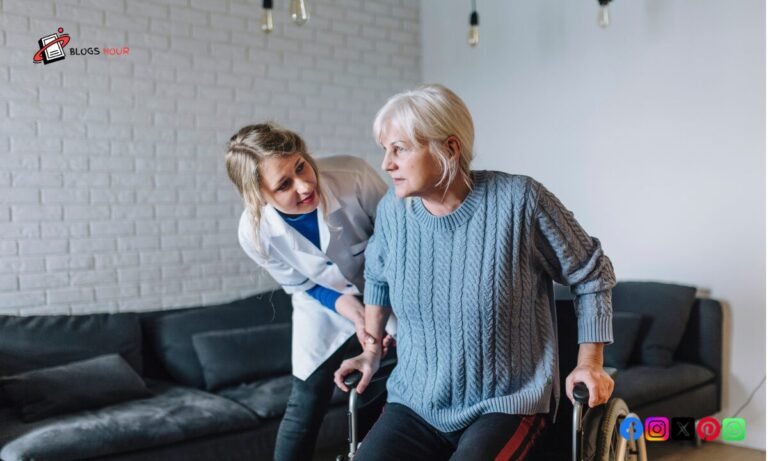Endometriosis refers to a persistent health condition where tissues similar to the endometrial lining that surrounds the uterus grows outside the womb. It is a poorly understood disorder which impacts many people. The misplaced tissues are found throughout pelvic region and attach to the fallopian tubes, ovaries, the outer area of the uterus, and the bowels.
This lead to chronic inflammation and pain along with scar tissue of various kinds which can create multiple complications. Unlike normal tissues within the uterus, which can conveniently be removed with external secretion during a period, abnormal endometrial tissues are unable to do so which leads to inflammation and swelling of neighboring structures with accompanying constant pain.
The causes for endometriosis is still being analyzed. Factors such as genetics, imbalanced hormones, and environmental impacts are being scrutinized. These aspects must be analyzed in order to achieve better treatment modalities. For those seeking to understand the recent developments, drug trials for endometriosis offer promising treatment options.
Understanding Symptoms and Challenges
Symptoms of endometriosis vary and have the potential to disrupt daily life. One of the dominant symptoms is pelvic pain which not only correlates with periods but may persist even beyond. It is often intensely painful and disabling hinders the performance of basic chores. Futhermore, a considerable number of women suffer from menorrhagia which makes the menstrual period longer and heaver than usual.
Endometriosis is also associated with pain during sexual intercourse and bowel movements, as well as urination, especially in the case of women experiencing periods. Painful endometriosis results in chronic fatigue, diarrhea, constipation, bloating, and nausea, making it more complicated for women to manage daily activities. The emotional and mental effects are severe which drives them into deep frustration due to the accompanying diagnostic odyssey fueled by prolonged symptomatology and lack of answers.
The process of obtaining a diagnosis is often tedious and these individuals have to undergo laparoscopic surgery before being diagnosed. Diagnosis is essential, but it may take a staggering 6 to 11 years after the patient starts noticing symptoms. For additional details concerning the symptoms and their effects, readers may review Healthline’s thorough summary.
Exploring Treatment Options
Once diagnosed, managing endometriosis, it becomes a unique journey for every individual. Treatment will depend on the level of symptoms a patient is experiencing and how they affect the individual’s desire to bear children. Pain relief aims to begin with NSAIDs available without a prescription. If these do not work, other forms of treatment may be considered. Oftentimes, hormonal therapy becomes an option, which includes, but is not limited to, oral contraceptives, Gonadotropin Releasing Hormone (GnRH) Agonists, or Progestins that seek to remove menstruation entirely to curb the cycle of endometrial growth.
In more advanced cases, surgery may be the only option available, as laparoscopy is a primary modality for scar tissue and endometrial implants removal. It is typical for these surgeries to provide at least temporary relief, but if symptoms reappear, repeat procedures become necessary. Therefore, regular and active reconsidering of treatment plans is necessary due to the dynamic nature of the medical condition.
As a result, having regular conversations with health workers becomes the most important step in managing the situation since the changing nature of the medical condition requires seamless adaptation in the way treatments help relieve symptoms.
The Importance of Clinical Trials in Medical Research
A better quality of life for patients living with endometriosis can only be achieved through scientifically validating therapies using rigorous clinical research meticulously crafted by professionals. Each strand of the ailment’s genetics and environmental profiles serves as a treatment beacon when integrated with science and engineering research incorporated in deploying cutting-edge treatment technologies.
This work goes beyond simply acquiring a particular treatment; it transports patients into the world of futuristic, seamless, and automated therapies that manage endometriosis on multiple dimensions, manifesting its geographical barriers. From sand dune surgical enhancement technologies to implants functioning on the legs and arms, the ingenuity stimulating modern hormone based surgery holds incredible healing potential, truly redefining it’s geographic limits. Those who are keen to follow innovation progress have clinical trial registries at their disposal for exploration along with details regarding the benefits and risks intertwined.
The void that remains unfilled encompasses the time when scientific practitioners rationalize the complexities surmised within endometriosis and counteract with empathetic solutions apt to dwell into supplementary warmth, offering stunning treatment options with great caring depth for inhaling boundless beauty.
The Importance of Support Systems
No one should handle endometriosis on their own. As discussed, supportive social circles such as partners, family, and friends play an essential role in providing emotional support during painful episodes or consultations with healthcare professionals. Their compassion allows one to recover faster emotionally.
At the group level, both online and offline support groups devoted to endometriosis offer invaluable support for different individuals. These can be lifesaving through shared experiences. People that other patients can relate to change the way they think about themselves and motivate them. Shared experience from people who have faced the same problem makes it easy to find solutions.
Diet and Lifestyle Etiquettes
Adjusting diet and lifestyle in conjunction with medical treatment has been found to effectively improve the symptoms of endometriosis. Following a diet rich in anti-inflammatory foods helps control inflammation. Endometriosis is associated with a lot of discomfort, and managing the condition with a proper diet aids in alleviating some of the discomfort. Incorporating leafy greens, berries, nuts, seeds, and fatty fish can help in improving health.
Equally important to the development of a successful management plan, regular physical activity should be incorporated. Exercises that enhance physical fitness, such as yoga, swimming, walking, and Pilates, greatly improve mood while simultaneously reducing stress and alleviating endometriosis symptoms. Furthermore, relaxation methods such as meditation or mindfulness offer mental clarity and reduction of stress, further decreasing the overall burden of symptoms.
Formulating a detailed menu and wellness schedule with a dietitian or nutritionist would assist in managing the symptoms of endometriosis by improving specific symptoms alongside overall health.
Women Sharing Their Stories.
There is no greater resource for understanding the experience of living with endometriosis than personal stories. The introduction of blogs and social media has enabled women to share their experiences and support each other, contributing to a better understanding of the condition.
These narratives are equally effective in raising awareness for the condition and advocating for the attention it does not receive. These narratives create a better understanding that cultivates a compassionate and well-informed society ready to talk about women’s health issues in public discourse.
In sharing these stories, women bravely step forward as beacons of hope and guidance for those on similar paths while ending the silence and creating a world where endometriosis is comprehensively understood.
Conclusion
The challenges presented by endometriosis are balanced by equal opportunities for coping, healing, and empowerment through education and community support. The people suffering from this condition, along with whomever chooses to advocate for them, have the possibility of relief and resilience through research, improved awareness, and sound management practices.
With innovation in treatment options, empowerment through knowledge, and the strong support of a neighboring community, women diagnosed with endometriosis will surely have the inner strength to tackle the condition, confidently securing a healthier life.




